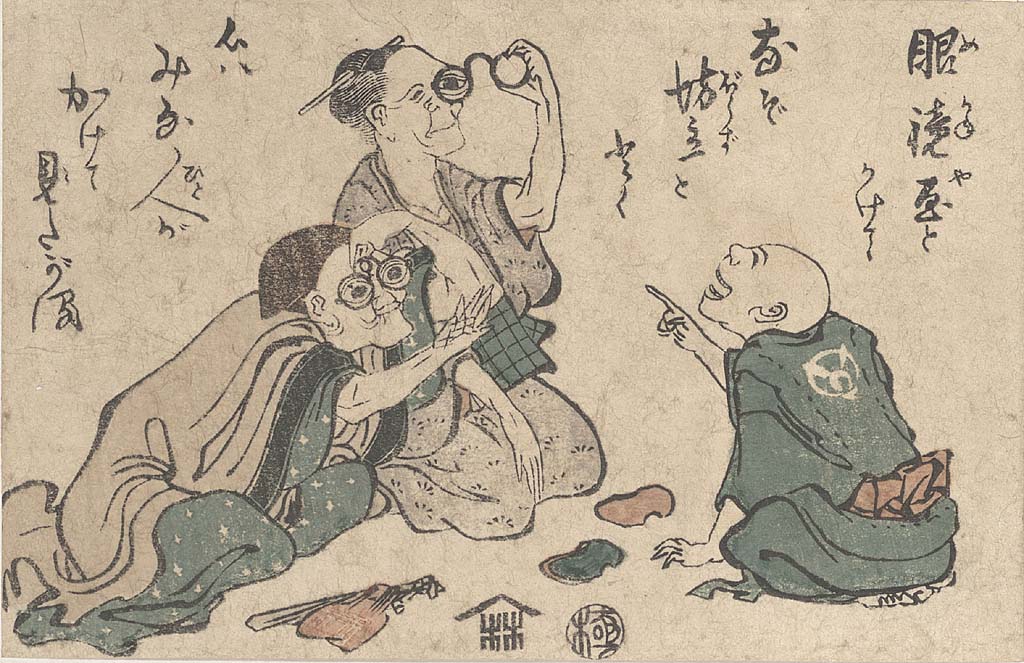The New York Times has posted a lovely analysis of my favorite woodblock print by Hokusai, “Ejiri in Suruga Province” (circa 1830, from his “Thirty-Six Views of Mt. Fuji” series), in which a sudden blast of wind is the invisible subject of the piece. Nature and landscape and social class and quotidian humor, all meeting together in a pivotal moment of art history where Dutch imports influenced the Edo-era artists whose own innovative works quickly influenced the French.
Tag: ukiyo-e
-
Hokusai’s Sudden Gust
-
Hokusai Glasses

Megana-ya (Seller of Eyeglasses), by Hokusai, circa 1811-1814, part of a incredibly great collection of health-related Japanese woodblock prints housed at the University of California, San Francisco. Having recently bought a new pair of glasses, I can relate.
(Via Pink Tentacle)
-
Sensing Nature
From David Cyranoski’s review of the Sensing Nature exhibition at the Tokyo Mori Art Museum:
The merging of nature and human activity harks back to earlier Japanese tradition, according to art historian Toshio Watanabe of the University of the Arts in London, who is lecturing at the gallery. The famed woodblock landscapes of Japan usually depict human endeavour coexisting with nature — unlike Western art, in which nature is an awesome, sublime force that often excludes or overpowers humans. Even in Hokusai’s famous 1832 painting The Great Wave off Kanagawa, Watanabe explains, the people don’t look panicked and no boats are overturned: “The picture is as much about the energy of the boatmen as the waves.”
Above video from the show: Snow, an interactive installation of feathers created by Yoshioka Tokujin.

